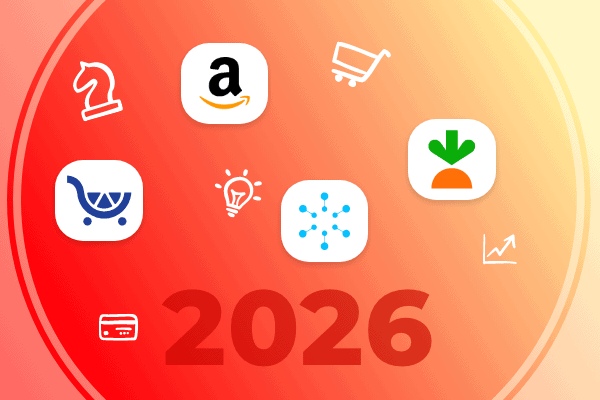Summary
As the 2024 holiday season nears, Skai presents five key insights to fine-tune your strategy. Early shopping continues to grow, with 58% of consumers planning to start by November 1st. Black Friday remains dominant, but balancing early promotions is crucial. AI tools are increasingly used for shopping, while late-season and post-holiday deals attract deal-seekers. Read the full post for nuggets of insight that may make a difference for your brand this holiday shopping season.
The holiday season is right around the corner, and while your plans are likely already approved, we have some valuable data to share that could help you make some final adjustments. With consumer behavior constantly evolving, staying informed and agile in your strategy is important to ensure you maximize this peak shopping period.
Visit Skai’s Holiday Hub for valuable insights — including two in-depth infographics: our 2023 Holiday Season Recap and the 2024 Holiday Consumer Survey.
Below are five key themes and actionable advice from our research to fine-tune your approach for the upcoming season.
Early shopping is becoming the norm
In 2023, many consumers started their holiday shopping early, particularly in response to major events like Amazon’s October Prime Day. Many consumers began shopping before November, seeking deals and avoiding the rush of the later holiday season. For 2024, this trend continues to grow, with 58% of consumers planning to begin shopping by November 1st, and 15% already starting. Consumers are eager to spread out their purchases, focusing on budgeting and finding the best deals.
Marketers should leverage this shift toward early shopping by adjusting their promotional schedules. With more consumers shopping earlier, it’s crucial to ensure that holiday campaigns are prepared well in advance. This trend highlights the need for early deals and targeted marketing that captures consumer attention before November, capitalizing on early shopper behavior.
Action Items:
- Launch holiday campaigns earlier, ideally starting in mid-October.
- Promote limited-time deals in October to encourage early shoppers.
- Segment marketing campaigns to target consumers who prefer early shopping.
Retailers need to balance early promotions
Black Friday dominated the Cyber Five in 2023, with 17% higher retail media spending and 21% higher ad-driven sales than Cyber Monday. This demonstrates that even with early promotions, Black Friday remains a major day for holiday shopping. However, in 2024, 59% of consumers still believe that holiday promotions before October are too early, while 20% think it’s never too early. This creates a delicate balance for retailers, who need to cater to both groups.
To plan effectively for 2024, marketers should balance launching early promotions and maintaining the impact of traditional shopping days like Black Friday. Early promotions should start in mid-October, while leaving room for more significant discounts during Black Friday to capture deal-hungry shoppers. Retailers must carefully monitor consumer sentiment and adjust promotional calendars to avoid fatigue and keep demand high.
Action Items:
- Test early promotions in October and ramp up for Black Friday deals.
- Use recent holiday season data to assess when your audience is ready for promotions.
- Be ready for Black Friday as it still offers the biggest savings to drive engagement.
AI is emerging as a holiday shopping tool
In 2024, AI-driven tools like ChatGPT are on the rise, with 13% of shoppers using them for holiday shopping, up from 5% last year. This shift toward AI signals a growing need for retailers to optimize their digital strategies. And most big retailers offer AI search assistance to get consumers to the most relevant products as quickly as possible. AI is changing the game!
As AI becomes more integrated into the shopping experience, marketers should be prepared to meet consumers where they are—whether they’re researching products via search engines, retailer websites, or AI tools. Optimizing content and ensuring product visibility in these digital channels will be critical to attracting tech-savvy shoppers. Additionally, leveraging AI for personalized recommendations or customer service can provide an edge in the competitive holiday market.
Action Items:
- Ensure product listings are optimized for search engines and AI-powered queries.
- Incorporate AI-driven tools for personalized holiday recommendations.
- Use AI for customer support to handle increased holiday inquiries more efficiently.
Plan for last-minute shoppers and deal seekers
Black Friday was the biggest shopping day in 2023, with consumers waiting to take advantage of significant discounts. Late-season shoppers drove up retail media sales during this period, showing that many people are still looking for the best deals toward the end of the holiday season. This year, our survey found that 60% of consumers might wait until January for better deals, reflecting continued interest in snagging discounts even after the holidays.
Marketers should not only plan for early shoppers but also ensure they have robust plans for last-minute and post-holiday deal seekers. Extending promotions beyond Black Friday into January can capture those willing to wait for even deeper discounts. By balancing early shopping strategies with end-of-season campaigns, marketers can maximize their reach and ensure sales stay strong throughout the entire holiday period.
Action Items:
- Plan for late-season promotions and post-holiday sales events.
- Keep inventory and deals available through January to cater to deal seekers.
- Target last-minute shoppers with time-sensitive discounts during December.
Marketers in top shopping categories need to be ready
The 2023 holiday season saw significant consumer spending across various product categories, and this trend is expected to continue into 2024. While fashion and apparel lead the way, with 90.7% of consumers planning purchases in this category, other categories such as Toys & Games, Hobbies & Leisure, and Beauty & Personal are also rank high in consumer demand. These diverse interests highlight the need for marketers across multiple sectors to refine their strategies and capture shoppers’ attention during the peak season.
Marketers in each of these top categories should be ready to engage consumers with targeted campaigns that cater to evolving preferences and buying behaviors. From fashion to electronics, every category presents an opportunity to leverage tailored promotions, exclusive offers, and strategic visibility on retail websites and social media to maximize sales.
Key Holiday Shopping Categories
(% of consumers planning to buy)
- 90.7% – Fashion & Apparel
- 84.6% – Toys & Games
- 83.8% – Hobbies & Leisure
- 81.8% – Beauty & Personal Care
- 78.5% – Books, Music, & Media
- 74.7% – Health & Wellness
- 73.5% – Computers & Consumer Electronics
- 72.7% – Jewelry
- 67.7% – Home & Garden.
Action Items:
- Tailor promotions to align with the top categories your brand represents.
- Offer category-specific limited-time offers or exclusive collections to capture interest.
- Maintain strong visibility in key shopping channels, including retail websites and social media, to reach category-focused shoppers at every stage of their journey.
Skai’s advanced capabilities can supercharge your holiday campaigns
As the holiday season approaches, marketers need a robust and versatile platform to stay agile and maximize their strategies. Skai offers powerful capabilities to take your holiday marketing to the next level by providing a unified approach across multiple channels.
Here’s how Skai can help you dominate this holiday season:
Omnichannel media orchestration allows you to manage all your digital campaigns across key platforms like Amazon, Walmart, Meta, and Google within a single interface. With everything under one roof, you can adjust campaigns swiftly, ensuring you stay responsive to real-time consumer behavior as the holidays unfold.
AI-powered optimization helps you streamline campaign management. Skai’s advanced machine learning algorithms automate key tasks like bidding and budget allocation, freeing up your team to focus on strategy. This capability is crucial for scaling during peak holiday shopping periods without sacrificing precision.
Intelligent creative management consolidates all your creative assets across channels in one place, enabling efficient, AI-driven performance analysis. This lets you make quick adjustments to your holiday creatives based on what resonates with your audience.
Advanced automated actions allow you to automate complex workflows, such as adjusting bids or budgets based on performance metrics or time-sensitive factors like holiday flash sales. This ensures you’re optimizing every opportunity to engage high-intent shoppers.
Cross-channel audience management gives you a holistic view of your audience across platforms like TikTok, Snap, and Meta, so you can more effectively target shoppers during key holiday moments. You can also manage and sync customer lists to keep your data fresh and actionable.
Generative AI recommendations provide insights on emerging keywords and trends, especially in search, helping you stay ahead of holiday-specific shopping behaviors and capitalize on opportunities as they arise.
Custom reporting and dashboards enable you to track campaign performance and holiday trends in real time. You can build custom reports highlighting the metrics most important to your business, ensuring you have the insights needed to act fast and adjust strategy.
Scheduled reporting ensures that your stakeholders stay informed with automated reports delivered via email or Slack. This is especially helpful during the busy holiday period when quick decision-making is critical.
Retail media integration allows you to manage all your campaigns across 100+ retailers in one place. This ensures that you maintain a consistent strategy and message and maximizes reach during the crucial holiday shopping windows.
AI dayparting lets you optimize your ad spend based on peak holiday shopping times. By automatically adjusting bids throughout the day, Skai ensures you’re always investing where and when it counts most.
With these advanced capabilities, Skai equips you with the tools needed to navigate the holiday season efficiently and effectively, ensuring that every aspect of your campaign—from creative to budget—is optimized for success.
Ensure your holiday campaigns deliver results this season
As the holiday season quickly approaches, now is the perfect time to refine your strategies and maximize every opportunity. Consumer behavior continues to shift, and staying ahead of trends like early shopping and the rise of AI-powered tools will help you capture more market share. Adjusting your promotional timing, balancing early and late-season deals, and embracing digital touchpoints will position your brand to succeed during this critical shopping period.
The data shared in this post offers valuable insights to inform those final tweaks to your campaigns, ensuring that you are well-prepared to meet evolving consumer demands. For Skai clients, now is the ideal moment to powwow with your client success team to fine-tune your approach and unlock even more potential from your holiday campaigns.
Beyond strategy, leveraging advanced capabilities like Skai’s AI-powered optimization, cross-channel audience management, and real-time reporting can streamline your efforts and increase efficiency. Skai’s tools empower you to stay responsive and agile, making real-time adjustments as consumer behavior unfolds throughout the season.
For those not yet Skai clients, you still have time to take advantage of our platform’s powerful features and ensure your holiday campaigns deliver the best possible results. Take action now to optimize and elevate your holiday marketing efforts.
We invite you to schedule a quick demo to see all of our cutting-edge innovations firsthand.
Happy holidays!







